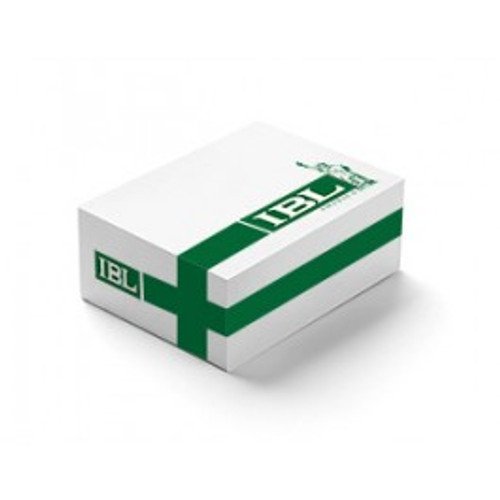Enzyme immunoassay (ELISA) for the determination of IGFBP-2 in mouse and rat serum. For research use only, not for use in diagnostic procedures.
Insulin-like growth factors (IGFs) regulate the proliferation, differentiation, apoptosis, cell adhesion and metabolism in various tissues and cell types IGFBP-2 is an un-glycosylated polypeptide of 31.3 kDa, which forms binary IGF-complexes and shows no circadian rhythm in the circulation. The serum concentration of IGFBP-2 increases in fasting, after major surgery and after trauma, but the increasing of the concentration is most intensive in malignant diseases.
The correlation of the IGFBP-2 level to the degree of progression is a striking feature in various tumor types as is the normalization of the IGFBP-serum levels after remission (5-10). During the GH-therapy, e.g. in short stature and in GH-abuse (doping) the IGFBP-2 level decreases. In Trisomy 18 IGFBP-2 in maternal serum is decreased and IGFBP-1 is increased; therefore the ratio IGFBP-2 /IGFBP-1 is a marker for this chromosome abnormality (17).
Transgenic organisms are a good opportunity to investigate the function of genes or proteins. The mouse or rat model is a well-suited system for investigation of the relevance of IGFBP-2 in physiological and pathological processes. Over expression of the IGFBP-2 gene in mice results in a weight reduction of 30% in spleen and moderately reduced weight in other organs (18). Effects of IGFBP-2 on the organism can be compensated through the modified expression of other IGF-Binding proteins
Especially in tumor biology the mouse and rat systems enable investigation of the systemic relevance of IGFBP-2. IGFBP-2 influences tumor cells as it induces catalase activity in adrenocortical cells (19). Furthermore IGFBP-2 interacts with tumor cells via its RGD-amino acid sequence and seems to stimulate cell invasion of glioma cells (20).
- Assay Description:
- 1 hour incubation (RT) + 1 hour (RT) + 30 min. (RT) + 30 min. in the dark (RT) = 3 hours total incubation time
- Catalog number:
- E08
- configuration:
- 96 Determinations, 12x8 removable strips
- controls:
- 1 control, lyophilized
- design:
- Enzyme immunoassay (ELISA) technique
- FDA Status:
- For research use only, not for use in diagnostic procedures
- MSDS:
- Available Upon Request
- Protocol:
- notes:
- The protocol for this product (see above) is intended to serve as an example only. Please refer to the Instructions For Use provided with the assay kit for precise details.
- Sample types:
- Mouse and rat serum
- Sample volume:
- 100 μL of properly diluted unknown / determination
- standards:
- 7 standards, lyophilized
- Standard range:
- 31.25 - 2000 pg/mL
- storage:
- 2 - 8 °C
- sensitivity:
- 0.01 ng/mL
- Species:
- Mouse, Rat







